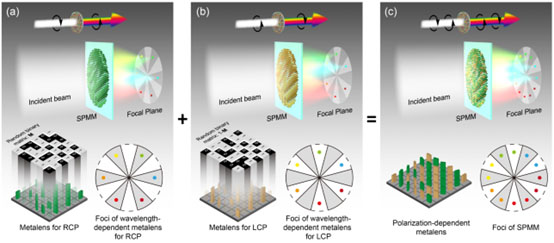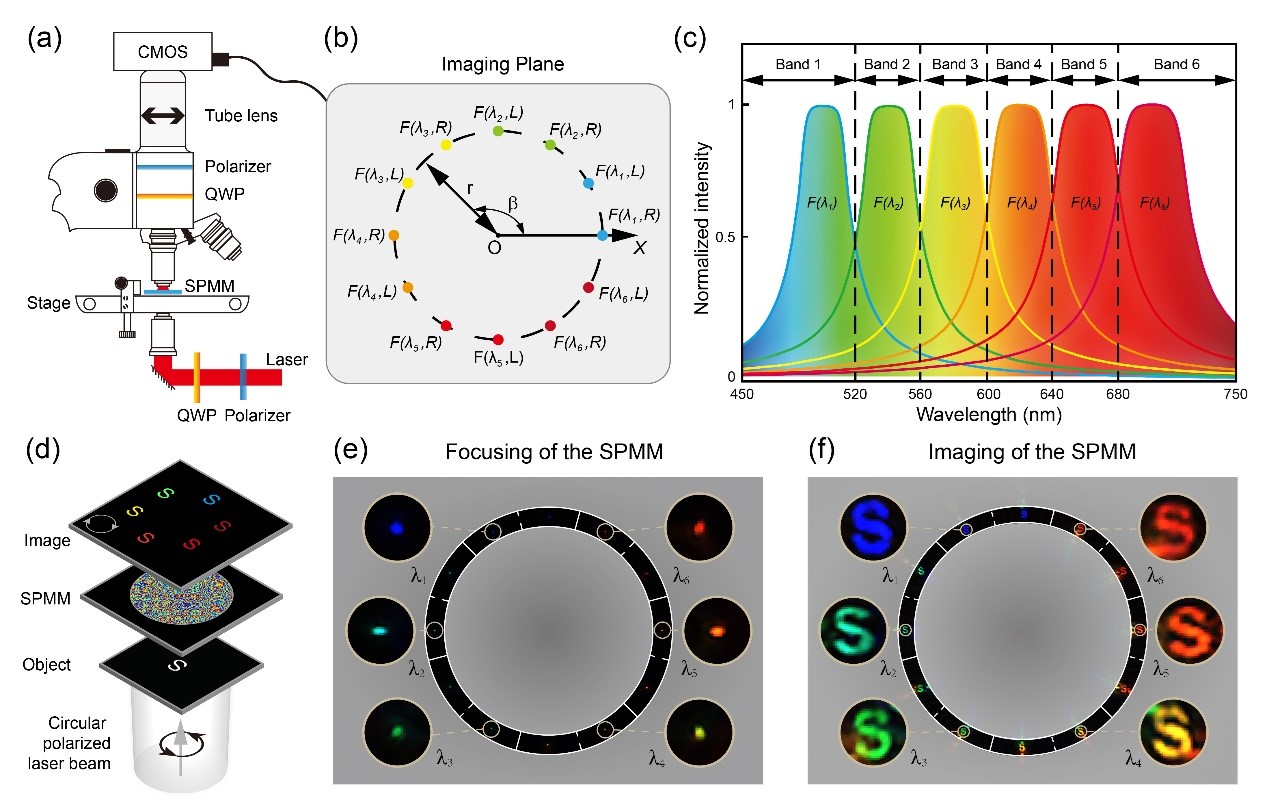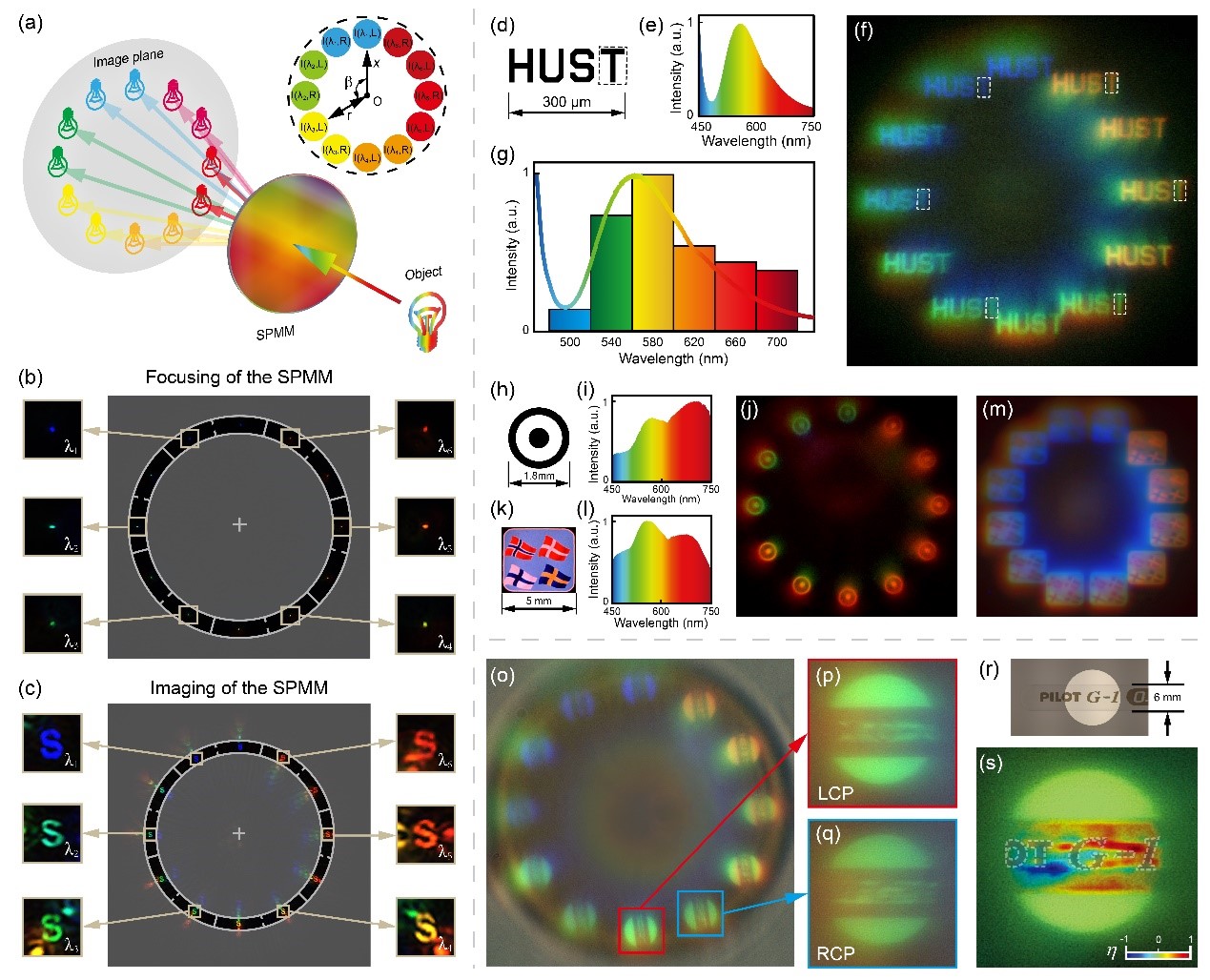| Apr 04, 2023 |
Multi-foci metalens for spectra and polarization ellipticity recognition and reconstruction
(Nanowerk News) A new publication from Opto-Electronic Science ("Multi-foci metalens for spectra and polarization ellipticity recognition and reconstruction") considers multi-foci metalens for spectra and polarization ellipticity recognition and reconstruction.
|
|
As fundamental properties of light, spectra and polarization carry vital information concerning the propagation of light waves. For example, spectral imaging can reflect the material composition of objects, while polarized imaging contains information on the texture of the surface, light polarization, and/or spatial distribution of the optical properties of a scene.
|
|
Owing to the crucial information provided by light wavelength and polarization, multispectral and polarized imaging technologies are of significant interest in various science and technology fields, including archeology, biology, remote sensing, and astronomy.
|
|
Conventional multispectral and polarization imaging devices are based on filters and polarization analyzers, which usually require to take multiple shots to collect desired optical information and consist of bulky multi-pass systems or mechanically moving parts and are difficult to integrate into compact and integrated optical systems.
|
 |
| Fig. 1. Design of the spectra- and polarization ellipticity resolved multi-foci metalens. (Image: Compuscript)
|
|
Metasurfaces that achieve full control of light properties, such as phases, amplitudes, and polarization states, have been demonstrated. As two-dimensional optical devices consisting of sub-wavelength nanostructures, metasurfaces are suitable for the design of integrated systems. Today, metasurfaces have been used in many different types of functional optical devices, such as optical displays, orbital angular momentum devices, beam splitters, meta-holography elements, and light-field imaging.
|
|
To realize integrated and compact designs, metasurface elements have been used in polarization and multispectral optical systems. However, there remains a lack of metalens devices that can achieve both spectra- and polarization-resolved functionalities simultaneously while keeping a good imaging performance with a large numerical aperture (NA). On the technical side, although at least three projections are required to determine the polarization state, the longitude of the Poincare sphere (also expressed as polarization ellipticity) can also reflect abundant information of the scene.
|
|
The research groups of Prof. Wei Xiong, Prof. Jinsong Xia, and Prof. Hui Gao from Huazhong University of Science and Technology proposed a spectra- and polarization ellipticity resolved multi-foci metalens (SPMM) methodology to realize the spectra- and polarization ellipticity resolved imaging without the requirement of any moving parts or bulky spectral and polarization optics.
|
 |
| Fig. 2. Multispectral and polarized imaging using the SPMM with laser source. (Image: Compuscript)
|
|
Unlike previously demonstrated common multispectral or polarization imaging systems, the SPMM can collect the desired optical information by only a single shot due to its twelve spectra- and polarization-dependent images at different locations, which simplifies the process of collecting optical information.
|
|
In this SPMM design, the positions and intensities of foci/images on the focal/imaging plane can be changed by tuning the polarization ellipticity and/or spectra of incident light beams. Therefore, the as-developed SPMM device possesses both detection and reconstruction abilities of specific polarization ellipticity and discrete wavelengths (or spectral bands) while keeping normal functions of metalens such as focusing and imaging. And the SPMM has a sharing aperture design which possesses superior imaging performance due to the larger NA than that of the as-reported micro-metalens array design with the same fabrication size and focal length.
|
|
Experimental demonstrations of the SPMM are performed with both coherent and incoherent light to prove its general applicability.
|
|
The light from imaged objects contains rich information associated with multiple wavelengths and polarization ellipticity, which is usually lost or ignored in traditional intensity-based imaging methods. To address this issue, the SPMM generates twelve foci or images at different positions, which correspond to six bands of spectra and two orthogonal circular polarization states.
|
|
Furthermore, the spectra and polarization ellipticity (linear, elliptical, or circular) relating to specific object areas can be resolved and reconstructed by identifying the focusing/imaging positions and corresponding relative intensities.
|
 |
| Fig. 3. Multispectral and polarized imaging using the SPMM with ordinary white light beams. (Image: Compuscript)
|
|
The design and physical mechanism of the SPMM are based on the principles of geometric phase and holography. To realize a transversely dispersive metalens, the phase distributions of multiple lenses that possess different working wavelengths with corresponding foci at different positions can be encoded to a single metasurface element by the holography principle.
|
|
The polarization-dependent metalens design can be obtained by adding these two Hadamard product results together. The focal position of this metalens can be switched by changing the polarization of the incident light beam. Therefore, an SPMM with twelve foci can be obtained by combining two transversely dispersive metalenses randomly as a single metasurface element, as shown in Fig. 1.
|
|
Compared with the existing special metasurface spectra- or polarization detection elements based on a micro-metalens array, through the demonstration of the SPMM imaging with both ordinary coherent (Fig.2) and incoherent light sources (Fig.3), this work has exhibited its practical potential for the construction of ultra-compact multispectral and polarized imaging devices without the need of a multi-pass design using complicated spectral filters or mechanically moving parts.
|
|
Moreover, this SPMM concept can be extended to the reconstruction of arbitrary points with both longitude and latitude on the Poincare sphere and achieve much finer partition of spectral bands via improved metalens design and nanofabrication techniques.
|



